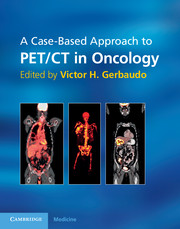Book contents
- Frontmatter
- Contents
- Contributors
- Foreword
- Preface
- Part I General concepts of PET and PET/CT imaging
- Chapter 1 PET and PET/CT physics, instrumentation, and artifacts
- Chapter 2 PET probes for oncology
- Chapter 3 PET/CT information systems
- Chapter 4 Functional anatomy of the FDG image
- Part II Oncologic applications
- Index
- References
Chapter 4 - Functional anatomy of the FDG image
from Part I - General concepts of PET and PET/CT imaging
Published online by Cambridge University Press: 05 September 2012
- Frontmatter
- Contents
- Contributors
- Foreword
- Preface
- Part I General concepts of PET and PET/CT imaging
- Chapter 1 PET and PET/CT physics, instrumentation, and artifacts
- Chapter 2 PET probes for oncology
- Chapter 3 PET/CT information systems
- Chapter 4 Functional anatomy of the FDG image
- Part II Oncologic applications
- Index
- References
Summary
The physiologic basis of FDG uptake
18F-fluorodeoxyglucose (FDG) is an index molecule for glucose metabolism, a highly complex physiologic process. It is practically a truism that malignant cells proliferate rapidly, and thus tend to have a high metabolic rate (1, 2). However, this statement conceals as much as it reveals. The “metabolism” depicted by a PET scan image cannot be treated as a simple continuum, with benign and inert tissues at the low end (white = “good”), and rampant malignancies at the high end (black = “bad”). There are many kinds of metabolism, and glucose is not the only metabolic currency. Nor is glucose metabolism uniform; it has many competing pathways, often within the same cell. These include both catabolic (energy-producing) or anabolic (energy-consuming) processes, such as the pentose phosphate pathway.
FDG uptake does not directly correspond to the presence or activity of any single molecular target. Every count in every pixel on an ordinary PET scan is a summation of numerous factors, including delivery of tracer molecules to the tissues (plasma input function) and the microscopic and macroscopic architecture of the tissue itself. These are not academic trivia; intimate understanding of these factors is essential for accurate interpretation of PET images. Oversimplification is the most common and perhaps the most dangerous error in reading PET scans.
- Type
- Chapter
- Information
- A Case-Based Approach to PET/CT in Oncology , pp. 53 - 74Publisher: Cambridge University PressPrint publication year: 2012
References
- 2
- Cited by

